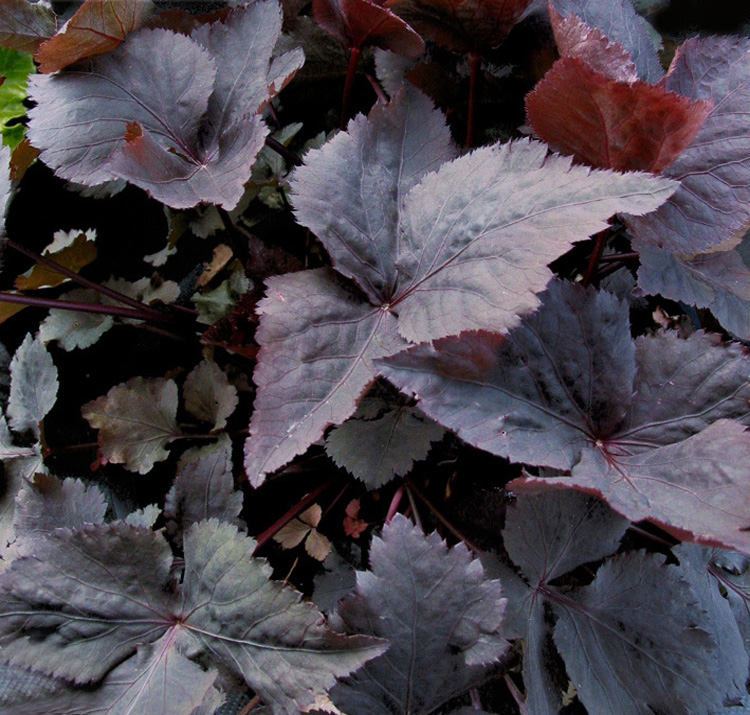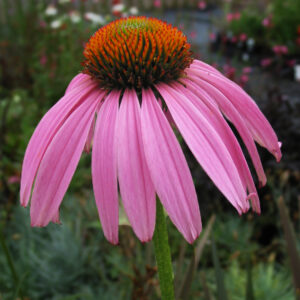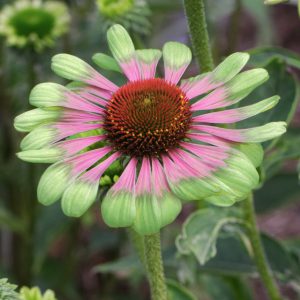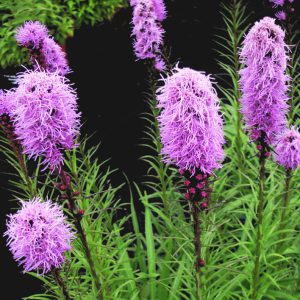- 1-9 pkts $4.50
- 10 pkts FREE
- Express post $12
Cryptotaenia japonica f. atropurpurea
JAPANESE BLACK PARSLEY
Cryptotaenia japonica f. atropurpurea is both tasty and decorative.
Black colour contrast amongst flowers & edible in veg patch
Commonly known (and used) as Japanese Black Parsley, Cryptotaenia japonica f. atropurpurea is perfect for providing dramatic colour and foliage contrast in the flower garden, as well as edible produce in the veggie plot.
Mound of marvellous purple-black foliage
Because the plant forms a mound of velvety purple-black three-lobed leaves, on black stems.
Topped by summer mists of pink flowers
Then in early summer the velvet-dark mound is also topped with sprays of finer than fine pink to white flowers.
So though the flowers are whisp fine, the overall effect of the plant is enchanting, and a striking colour contrast in any garden setting.
A very different & useful Parsley
Cryptotaenia japonica f. atropurpurea has a unique flavour, a little like a cross between Parsley and Celery.
So harvest the leaves fresh and use them in salads, in sushi, and as a colourful garnish.
Or cook both the leaves and stems in soups, stir-fries and casseroles for a unique vegetable flavour.
(Make sure you add them at the last moment, as prolonged cooking dulls the flavour).
While the roots can also be briefly blanched and sautéed, as in a parsley sauce.
Traditional herbal tonic
Cryptotaenia has traditional uses in Asian medicine as a tonic and for treatment of “ladies problems”.
Grow in some shade
Cryptotaenia japonica f. atropurpurea prefers growing in semi-shaded conditions or dappled light and shade, as the devilishly black leaves may scorch in hot sun.
It is naturally a woodland plant.
Perennial plant, but also self-seeds so is sometimes treated as an annual.
Enjoys a wide variety of soils including Clay, Chalk, Sand, Loam, with Alkaline, Neutral, or Acid pH.
SEED SOWING ADVICE:
Seeds of Cryptotaenia japonica f. atropurpurea can be scattered directly in the garden during late autumn or winter and left for nature to condition the seeds over winter / or seeds can be sown indoors at other times.
Once you have the first plants in the garden, Japanese Black Parsley will reliably sow itself each year.
So deadhead the plants after blooming if you do not want extra volunteers.
Sow indoors for early quick plants: First sow the seed in a punnet, or individual jiffy pots, on the surface of good quality seed raising mix.
Then gently press the seeds onto the surface of the mix, to ensure good contact.
Now barely cover the seed, because light helps the germination of this plant.
And you can use sieved mix, or fine grit, or vermiculite, or washed sand to sprinkle over the seeds.
Then stand the sown punnet in a shallow water bath.
So the moisture percolates up through the mix from the bottom to thoroughly moisten the mix throughout.
Soak for a short time until moisture appears on the surface of the mix, and then remove and drain.
Because the mix needs to be moist throughout, but not wet.
Now place the moist punnet in a warm, well-lit position (not in any direct sun).
Germinates in warmth & light
Temperatures of 21-23°C approx. are best for rapid and optimum germination.
You can use a temperature-controlled heat mat if you have one to encourage rapid germination, but it is not essential. A window-sill or well-lit corner is also fine.
Adding a clear plastic cover helps to retain moisture in the punnet.
And continue to keep the punnet moist by spraying the surface of the mix a fine spray water bottle, or re-soaking in the water bath, as required.
(If the punnet is light weight when you pick it up – the mix is drying out and needs another soak from below in the water bath).
Seedlings begin to emerge in approx. 30 days.
But these seeds are naturally irregular germinators, and not all will come at once. This is a cunning strategy by the plant to help at least some seedlings to germinate into favourable conditions in the wild.
So do not discard the punnet too quickly, as seedlings will continue to appear.
A “pretend winter” helps
However if the seeds are shy to germinate and nothing has appeared in 30 days, then the seeds need a period of chilling to break their natural dormancy. This dormancy is normal.
So wrap the moist, sown punnet in cling-wrap, place in the fridge (not freezer) for 6-8 weeks (this mimics winter).
Then remove, unwrap, moisten, and return to a warm, well-lit place for germination.
Transplant seedlings to grow pots as soon as the first set of true leaves have developed.
Continue to grow on and acclimatize to outdoors until large enough to plant in the garden.
Seed Count: 10 seeds per pack approx.
(We always aim to exceed the stated seed count, and give a generous serve).
Click here for Nursery Open Days & Open Gardens Information
https://www.gardivalia.com.au/open-gardens
Click here to go back to Seeds Shop
https://www.seedscape.net.au/shop/
Related products
-
Add to WishlistAlready In WishlistAdd to Wishlist
-
Add to WishlistAlready In WishlistAdd to Wishlist
-
Add to WishlistAlready In WishlistAdd to Wishlist
-
Add to WishlistAlready In WishlistAdd to Wishlist





